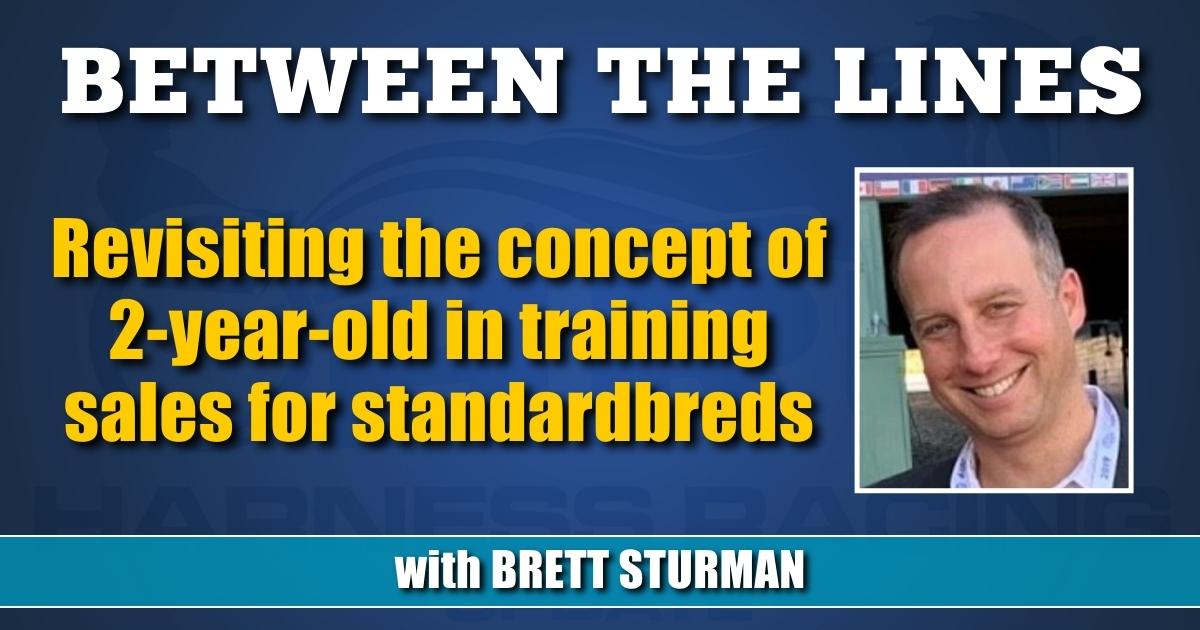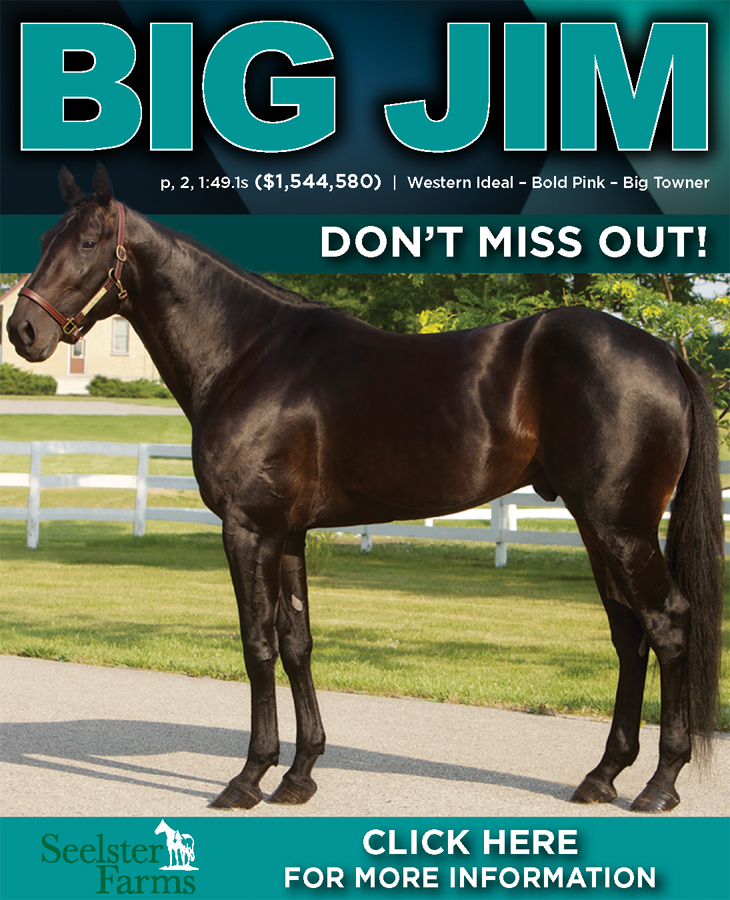

Revisiting the concept of 2-year-old in training sales for standardbreds
by Brett Sturman
This past week in the thoroughbred industry, the Ocala Breeders Sale Co. conducted their annual OBS March sale for 2-year-olds. One of the larger 2-year-old in training sales of the year, 460 horses grossed over $70 million, including a few that individually went for $1 million or more.
What makes the 2-year-old in training sales unique to harness racing (in addition to the prevalence of 2-year-old sales at all), is that in the days prior to bidding, every horse is officially timed breezing either an eighth or a quarter of a mile, and the clocking and video replay becomes part of that horse’s sale profile.
The business of purchasing yearlings with the intent to sell as 2-year-olds is a huge part of thoroughbred sales, but for whatever reason, it’s never really caught on in the standardbreds. Though, that’s not to say it hasn’t been tried.
I have a faint recollection of the standardbred 2-year-old experiment a few years back and after a bit of digging to even find what was documented for those efforts, here’s how it looked.
Brought forth in 2014 by David Reid of Preferred Equine, the idea was essentially to test the buying and selling waters for 2-year-olds and mirror the thoroughbred concept by having a Spring Mixed Sale at The Meadowlands along with having horses conduct a special training session at the track where they could work out and have their final quarter or eighth of a mile time recorded and published.
Back then, the results were largely uninspiring. In 2014, 22 2-year-olds were catalogued as part of the overall sale with $35,000 being the highest sold price. Many horses were sold in the $3,000 range. The next year was better, though. There were only 14 2-year-olds in that Spring sale, but two horses purchased by Tony Alagna were sold for $60,000 and $50,000. In 2017, the final year of the inclusion of 2-year-olds, only 11 horses went through the ring following a slew of Outs.
Of interesting note from that 2016 sale, a horse named Summer Side was consigned and bought back by Preferred Equine after failing to meet reserve. Bid up to $77,000 in the days following an impressive baby race, Summer Side would go on to win over $430,000 lifetime, including being second in the Art Rooney final at 3. Also, in that same sale — though later became an Out — was Derf Hanover, a trotter that went onto earn over $360,000.
I’m sure there were many reasons why the initial concept was abandoned and least of which had to do overall with an industry notoriously reluctant to change, but I wonder if changing dynamics would now allow for the 2-year-old in training concept to have a better chance at success.
For one, technology has changed. Back almost 10 years ago when the 2-year-old concept started, there wasn’t widespread online bidding for physical public sales. For the most part, if you wanted to bid, you or representation had to be present onsite. Now, that’s all changed. Online sales have become far more mainstream and produce an exponentially greater number of seller eyes from around the world on a sale.
Second, on the similar topic of greater visibility, is being able to see the 2-year-olds workout or race. I can’t recall if The Meadowlands produced live video or video replays of baby races from the time of those sales like they do today, but overall, the availability in seeing the 2-year-olds perform is nothing like it is today. A massive success has been the production of “The First Mile,” a professionally conducted high-definition live streaming of 2-year-old qualifiers held throughout June across Gaitway Farms and Magical Acres. It was reported that there were over 14,000 views two years ago from the initial season, and with the broadcast being sponsored by companies such as OnGait and Northwood Bloodstock, among others, the natural and mutual interest between consignors and online sales companies as it relates to the visibility of early 2-year-olds in training is obvious.
Reid was on the right track, in my opinion, with the idea of having a special training session in the days leading up to the sale. But what I didn’t see then, and couldn’t see even at this moment despite a lot of searching, was any information related to those workouts. Not that it was conducted in secrecy. It’s just that I don’t recall the results of those training being highly promoted. In April or May when a horse is 2 and they’re training down and almost ready to baby race, their training performance begins to take greater weight than their pedigree page and certainly more weight than an Owners Statement as to why the horse is for sale in the first place. Now, the technological mechanisms are in place for the workouts to be broadcast live, and then have the video replay and performance results updated live to that horse’s sales profile.
What could also be tweaked is what the training session itself consists of. Rather than a horse training a mile with an emphasis on the final quarter, perhaps the entire session could simply be a quarter mile in total, or an eighth of a mile brush. At any of these mile tracks such as The Meadowlands or Gaitway, a horse can gather momentum behind the starting car as always, and then once released, can brush for 13 seconds or so through the stretch straight away and be done with it. This way, it’s not putting the stress on a 2-year-old of having to go through a more extended workout.
Of course, having a horse brush an eighth of a mile in April or May isn’t necessarily indicative of how the horse will eventually perform in an actual race at a mile, but that’s part of the sales game. Sure, you could wait until the horses are in real baby races against one another in June, but by that point, it’s much less of a guessing game and the obviously decent horses will go for large amounts of money and then underperforming horses will be more devalued.
Though conducted privately, all the time today 2-year-olds that are training down impressively are already having shares of them sold. The idea of expanding that market to a more public forum combined with evidence of the performance is something that doesn’t seem as farfetched in the industry as it once did. If given another chance, the timing today for it to succeed could be better.














